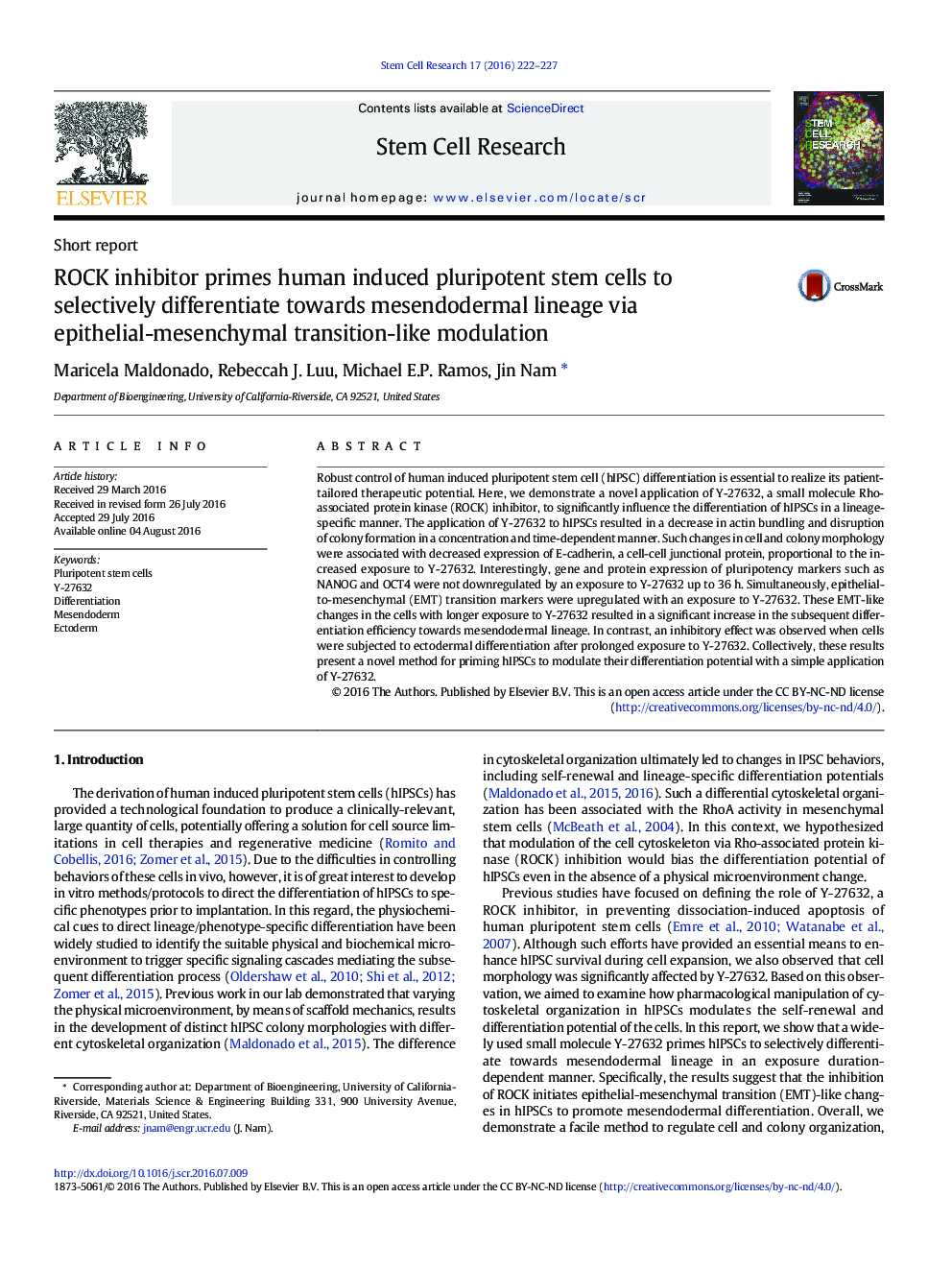| Article ID | Journal | Published Year | Pages | File Type |
|---|---|---|---|---|
| 2093871 | Stem Cell Research | 2016 | 6 Pages |
•Y-27632 modulates the cell/colony morphology of hIPSCs.•Y-27632 induces epithelial-to-mesenchymal transition-like changes in hIPSCs.•Y-27632 enhances hIPSC mesendodermal differentiation, but not ectodermal.
Robust control of human induced pluripotent stem cell (hIPSC) differentiation is essential to realize its patient-tailored therapeutic potential. Here, we demonstrate a novel application of Y-27632, a small molecule Rho-associated protein kinase (ROCK) inhibitor, to significantly influence the differentiation of hIPSCs in a lineage-specific manner. The application of Y-27632 to hIPSCs resulted in a decrease in actin bundling and disruption of colony formation in a concentration and time-dependent manner. Such changes in cell and colony morphology were associated with decreased expression of E-cadherin, a cell-cell junctional protein, proportional to the increased exposure to Y-27632. Interestingly, gene and protein expression of pluripotency markers such as NANOG and OCT4 were not downregulated by an exposure to Y-27632 up to 36 h. Simultaneously, epithelial-to-mesenchymal (EMT) transition markers were upregulated with an exposure to Y-27632. These EMT-like changes in the cells with longer exposure to Y-27632 resulted in a significant increase in the subsequent differentiation efficiency towards mesendodermal lineage. In contrast, an inhibitory effect was observed when cells were subjected to ectodermal differentiation after prolonged exposure to Y-27632. Collectively, these results present a novel method for priming hIPSCs to modulate their differentiation potential with a simple application of Y-27632.
